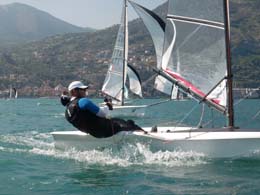05/08/2013 21:23:56 Alberto Zam� Posts: 50 | Hello Everybody, Tweet |
| 05/08/2013 22:18:07 Posts: 0 | Hi Alberto, Tweet |
05/08/2013 22:32:22 Alberto Zam� Posts: 50 | Hello Al, Tweet |
05/08/2013 22:40:09 Alberto Zam� Posts: 50 | Hello Chris, you were too fast to reply! However, resistance increases with the square of velocity, so the difference sholud be greater in strong winds (also considering apparent wind). Tweet |
| 05/08/2013 23:03:27 Posts: 0 | Hi Alberto, Tweet |
| 12/08/2013 22:05:31 Posts: 0 | I like the idea of reducing the weight on the retrieval end by tapering, particularly if using 5mm line. I might do that, but I think I'll go for 4mm and try it without tapering to start with. Tweet |
14/08/2013 21:01:35 Alberto Zam� Posts: 50 | My old halyard was also 15.7m and I had the impression it was too tight on the kite. I started with a 17m long one, I have shortened it twice but I don't know the exact length. I'd start from 16.5 and then try without cutting to shorten it a bit at a time by moving the knot at the head. Tweet |















